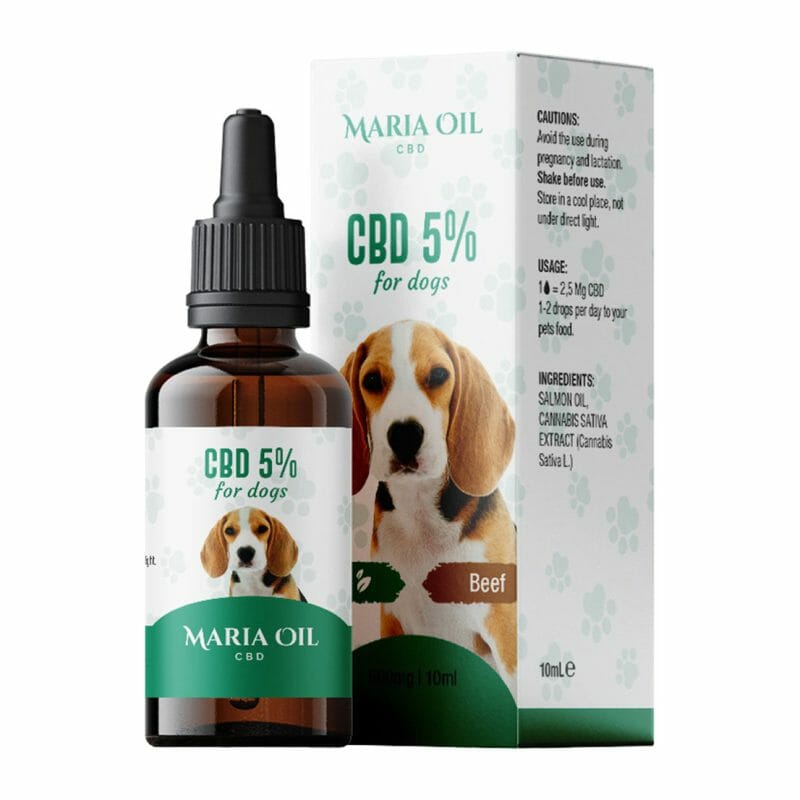Has your dog been scratching more than normal for a few days? Is an area of his skin reddened? Or are tufts of hair falling out?
Dermatitis in dogs is a common problem that can cause discomfort and irritation, by compromising our life companion’s well-being. This inflammatory condition can manifest itself in various ways, such as itching, redness and even body hair loss.
There are several causes of dermatitis, such as allergies, parasites and infections, and similar rashes could be symptoms of an underlying disease of a different origin.
Are you looking for natural remedies for dog dermatitis to make him/her feel better?
From the use of essential oils with soothing properties to local applications of aloe vera to reduce inflammation, we will look together at safe and chemical-free approaches to soothe your pet’s irritated skin.
We will see that proper nutrition also plays a key role and discuss foods rich in omega-3 fatty acids that can help improve skin health.
We will also elaborate on the importance of regular hygiene, including gentle baths with natural products, and provide practical tips for preventing dermatitis relapse.
Let’s find out now how to introduce remedies for dog dermatitis, how to treat it and how to adapt the daily routine to get him back to his usual wellbeing.
-
 CBD Oil 5% for Dogs£19.99
CBD Oil 5% for Dogs£19.99
Why does the dog have red skin?
Reddened skin in dogs can result from a number of causes, but in all cases it requires special care by the owner. Food or environmental allergies, insect bites, or contact with irritants such as detergents can cause skin irritation.
More serious conditions, such as fungal or bacterial infections, can manifest themselves with redness. Among other things, you have to be careful of skin lesions to avoid them becoming infected and leading to an even more serious ailment. Inflammation could be also caused by a parasite or other insect bite that injects stinging substances into the skin.
In addition, insufficient hygiene or excessive bathing can strip the dog’s natural hair of its protective oils, contributing to irritation.
You should know that some breeds are more susceptible to skin disorders, and genetic factors may play a role that should not be underestimated. Food and non-food intolerances, such as allergies to substances in the air or in the dog’s environment, can be more dangerous for sensitive individuals.
Finally, stress and tension can also affect skin health. If your dog is going through a difficult time emotionally, it may manifest this condition. Other illnesses and hormonal imbalances can also be affected.
How to tell if your dog has dermatitis
First of all, you need to find out whether your dog is actually suffering from dermatitis or whether the cause of its suffering lies elsewhere.
Here are some common signs that could indicate the presence of dermatitis in your dog:
- Itching and scratching: observe if your dog scratches frequently or licks excessively, these are predominant symptoms of dermatitis;
- Redness and inflammation: carefully inspect your dog’s fur, especially in the areas most prone to irritation, such as the belly, paws or ears;
- Loss of hair: note if you notice areas without hair or with a different appearance to the rest of the coat;
- Presence of scabs or ulcers: scabs, ulcers or sores on the skin may be symptoms of advanced dermatitis;
- Unpleasant odour: dermatitis may cause skin secretions that cause a different odour than usual.
A veterinarian should always be consulted for a correct diagnosis. Only an expert can tell you whether it is simply dermatitis or whether there is another, more serious disease going on.
Types of dermatitis in dogs
Dermatitis in dogs can have different causes and, consequently, also different types. These range from mange, which can also be transmitted to humans, to mycosis, to flea dermatitis. There can be allergic dermatitis, caused by an external agent such as food or insects, as well as atopic dermatitis, caused by allergens in the environment.
Knowing and being able to identify the correct form of dermatitis is very important to start immediately with the most suitable treatment and thus solve the problem as quickly as possible.
Let us find out together what the various types of dermatitis in dogs are and what they entail.
-
 CBD Oil 5% for Dogs£19.99
CBD Oil 5% for Dogs£19.99
Allergic dermatitis
Allergic dermatitis in dogs is an inflammatory skin reaction triggered by hypersensitivity to allergenic substances in the environment or food.
This form of allergic dermatitis is commonly classified into three subtypes:
- Allergic flea dermatitis (APD): is one of the most frequent causes of allergic dermatitis in dogs, flea saliva following a bite is often the culprit and causes an intense skin reaction, flea-allergic dogs may develop itching, redness, hair loss and, in severe cases, secondary skin infections;
- Allergic Contact Dermatitis (ACD): this is triggered by direct contact with irritating or allergenic substances such as detergents, plants, herbs or materials with which the dog comes into contact, in which case the skin may develop redness, swelling, blisters or pustules in the affected areas;
- Foodborne (FAD): this is caused by food allergies and may cause skin symptoms such as itching, redness, hair loss and irritation.
The pharmacological treatment of allergic dermatitis in dogs usually include the treatment of allergens, the use of antihistamines, soothing creams and, in some cases, special diets.
Atopic dermatitis
Atopic dermatitis in dogs is a chronic skin condition that develops due to an over-response of the immune system to common environmental substances such as pollen, dust or mites.
This form of dermatitis, one of the most common in dogs, is often associated with a genetic predisposition, and many dog breeds are more susceptible, such as the German Shepherd, Labrador Retriever and West Highland White Terrier, especially between the ages of 3 months and 6 years.
The most common symptoms of atopic dermatitis include persistent itching, redness, hair loss, the appearance of scabs and skin lesions. The most commonly affected areas are the face, ears, armpits, feet and groin region. Unlike other forms of dermatitis, atopic dermatitis often involves several areas of the body.
Diagnosing atopic dermatitis can be more complex than allergic dermatitis and is usually done by exclusion of other possible causes.
Classic treatment options may include antihistamines, corticosteroids, immunosuppressants and omega-3 fatty acid therapies to improve skin health. We will shortly see which natural remedies for dog dermatitis are most effective.
Stress dermatitis
As its name suggests, stress dermatitis in dogs is a skin condition that occurs as a result of stress or emotional tension that the animal may experience.
Although less common than other forms of dermatitis, stress can have a significant impact on skin health, triggering negative skin reactions, just as it does in humans.
The symptoms of stress dermatitis are excessive itching, redness, loss of hair and, in more severe cases, the appearance of skin lesions. The affected areas can vary, but often involve parts of the body where the dog may lick or scratch itself frequently.
Stressful situations for dogs can vary in nature and include changes in the environment, new people or pets, conflict situations and other factors that may cause anxiety in the animal.
The treatment of stress dermatitis focuses primarily on managing the stressor and reducing the dog’s anxiety. Approaches such as creating a calm environment, gradually introducing new elements into the dog’s life, using interactive toys and, in some cases, implementing positive training techniques can help reduce stress.

Fungal dermatitis
Fungal dermatitis in dogs, also known as mycotic dermatitis or skin mycosis, is a skin condition caused by the infection of pathogenic fungi on the animal’s skin. Among the most common fungi involved in these infections are the genus Malassezia and various types of dermatophytes.
The symptoms of fungal dermatitis may vary, but recurring symptoms are always itching, redness, scaling, hair loss and the formation of scabs or skin lesions.
The areas most frequently affected are ears, paws, perianal area and skin folds. Some dogs may develop a condition called ‘ringworm’ (dermatophytosis), that may appear as a round, hairless area with a darker edge.
To detect this specific form of dermatitis, laboratory tests are usually carried out by taking skin samples from the animal.
The typical treatment of fungal dermatitis in dogs requires the use of specific antifungals that can be administered topically or systemically, depending on the severity of the infection. Among other things, the treatment may require several weeks or months, according to the individual dog response.
Should your dog suffer from this type of dermatitis, it is advisable to isolate it to prevent the fungus from spreading to other pets or humans. In addition, it is best to sanitise objects and environments frequented by the dog to prevent reinfection.
How to treat dog dermatitis naturally?
Pharmacological treatments sometimes prove to be too heavy or ineffective. This risks increasing the suffering suffered by the animal and throwing the owner into despair.
For this reason, an alternative route is natural remedies for dog dermatitis, which can be part of a broader holistic approach. This not only eliminates the symptoms, but also restores your four-legged friend’s psycho-physical balance.
Let’s see how to make dermatitis go away in your dog:
- Natural oils: Coconut oil and tea tree oil have anti-inflammatory and antimicrobial properties, rosemary oil with antiseptic properties is also interesting, while if you are looking for a complete product you should go for CBD oil for dogs which acts as a pain reliever, anti-inflammatory, antiseptic and soothing;
- Aloe vera: aloe vera pulp, in its pure form free of harmful additives, can be applied locally to reduce inflammation and soothe irritated skin;
- Oatmeal baths: can soothe the dog’s skin; to prepare them, mix oatmeal with water to form a paste and apply during the bath;
- Chamomile: an infusion of chamomile, which has soothing and anti-inflammatory properties, can be used to make compresses on the dog’s skin;
- Dietary supplements: those containing omega-3 fatty acids can improve skin health and reduce inflammation.
To make your dog’s dermatitis go away naturally, also maintain good hygiene, avoid irritants and create a comfortable environment.
In particular, pay attention to the dosage of CBD for dogs as it varies depending on the weight of the animal, its experience with the active ingredient and the severity of the disorder to be treated.
-
 CBD Oil 5% for Dogs£19.99
CBD Oil 5% for Dogs£19.99
What should and should not a dog with dermatitis eat?
The diet of a dog with dermatitis should be designed to reduce inflammation and itching.
Here are some foods that should be included in the diet of a dog suffering from dermatitis:
- High-quality proteins: these are essential for healthy skin and coat, the best ones include meat, fish and eggs;
- Omega-3 fatty acids: found in salmon, trout, fish oil and nuts, or in certain active ingredients such as CBD;
- Antioxidants: help protect cells from damage, found in fruit, vegetables and green leafy vegetables.
Let us now see which foods should be avoided:
- Fats: can irritate the skin;
- Carbohydrates: promote inflammation;
- Foods with additives: irritate the skin.
Remember that every dog is an individual and that dietary needs may vary, especially if he suffers from allergic dermatitis.

Natural products for the well-being of dogs
There are many natural products that can be used to improve a dog’s well-being and prevent ailments such as dermatitis.
Some of the most common natural products for dog well-being include:
- Food products: based on completely organic ingredients, there are also food solutions such as CBD kibbles to supplement the diet and treat possible ailments and ongoing diseases;
- Supplements: provide essential nutrients, the most common of which include omega-3 fatty acids, glucosamine and chondroitin, propolis and herbs for skin and coat health;
- Skin and coat care: herbal shampoos and conditioners, anti-itch sprays and essential oils are excellent natural remedies for reddened dog skin;
- Cleaning and hygiene: such as toothpaste, mouthwash and ear shampoo;
- Oral health: the most common are chew sticks.
Whatever the case, your vet can help you choose the right products for your dog’s specific needs.
CBD products by Maria CBD Oil
Dog dermatitis can be a challenge for all owners, but it is comforting to know that there are natural and safe options for dealing with it. The use of CBD can offer significant relief due to its anti-inflammatory and calming properties.
If you are interested in experiencing the power of CBD for your four-legged friend, we invite you to explore the range of dog products offered by Maria CBD Oil. With formulations specifically designed for the needs of our furry friends and high-quality ingredients, Maria CBD Oil’s CBD products could be the natural solution you’ve been looking for to relieve your dog’s dermatitis.
Find out more in our online shop and give your dog the relief he deserves, naturally and safely.
 Contact us
Contact us 






